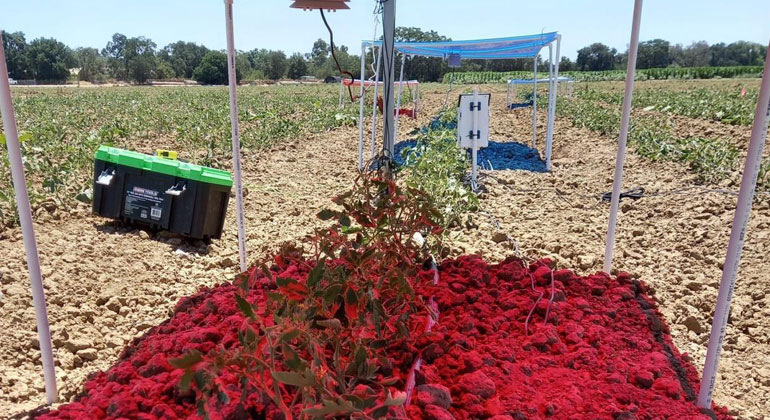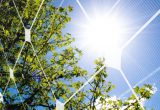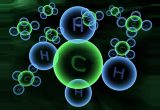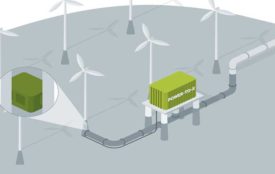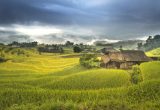Harvesting Light to Grow Food and Clean Energy Together
Different Light Spectra Serve Different Needs for Agrivoltaics
People are increasingly trying to grow both food and clean energy on the same land to help meet the challenges of climate change, drought and a growing global population that just topped 8 billion. This effort includes agrivoltaics, in which crops are grown under the shade of solar panels, ideally with less water.
Now scientists from the University of California, Davis, are investigating how to better harvest the sun — and its optimal light spectrum — to make agrivoltaic systems more efficient in arid agricultural regions like California.
Their study, published in Earth’s Future, a journal of the American Geophysical Union, found that the red part of the light spectrum is more efficient for growing plants, while the blue part of the spectrum is better used for solar production.

A door opener
The study’s results could help guide global interest in agrivoltaics and identify potential applications for those systems.
“This paper is a door opener for all sorts of technological advancements,” said corresponding author Majdi Abou Najm, an associate professor at the Department of Land, Air and Water Resources and a fellow at the UC Davis Institute of the Environment. He conducted the study with first author Matteo Camporese of the University of Padova in Italy, who came to UC Davis as a Fulbright visiting scholar. “Today’s solar panels take all the light and try to make the best of it. But what if a new generation of photovoltaics could take the blue light for clean energy and pass the red light onto the crops, where it is most efficient for photosynthesis?”
For the study, the scientists developed a photosynthesis and transpiration model to account for different light spectra. The model reproduced the response of various plants, including lettuce, basil and strawberry, to different light spectra in controlled lab conditions. A sensitivity analysis suggested the blue part of the spectrum is best filtered out to produce solar energy while the red spectrum can be optimized to grow food.
This work was further tested this past summer on tomato plants at UC Davis agricultural research fields in collaboration with UC Davis Assistant Professor Andre Daccache from the Department of Biological and Agricultural Engineering.
Guiding light
In an era of shrinking viable land, understanding how plants respond to different light spectra is a key step toward designing systems that balance sustainable land management with water use and food production, the study noted.
“We cannot feed 2 billion more people in 30 years by being just a little more water-efficient and continuing as we do,” Abou Najm said. “We need something transformative, not incremental. If we treat the sun as a resource, we can work with shade and generate electricity while producing crops underneath. Kilowatt hours become a secondary crop you can harvest.”
The study was funded by a U.S. Department of State Fulbright Research Scholarship, UC Davis and the National Institute of Food and Agriculture.
